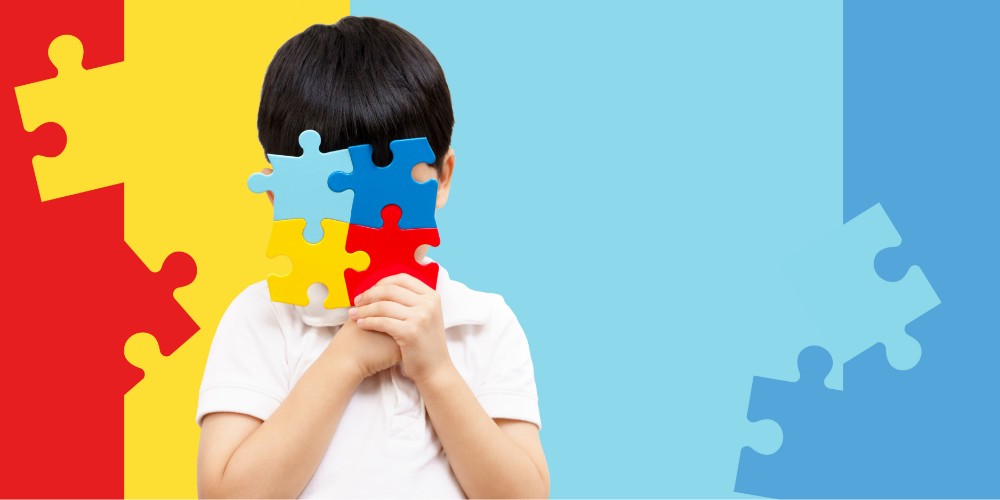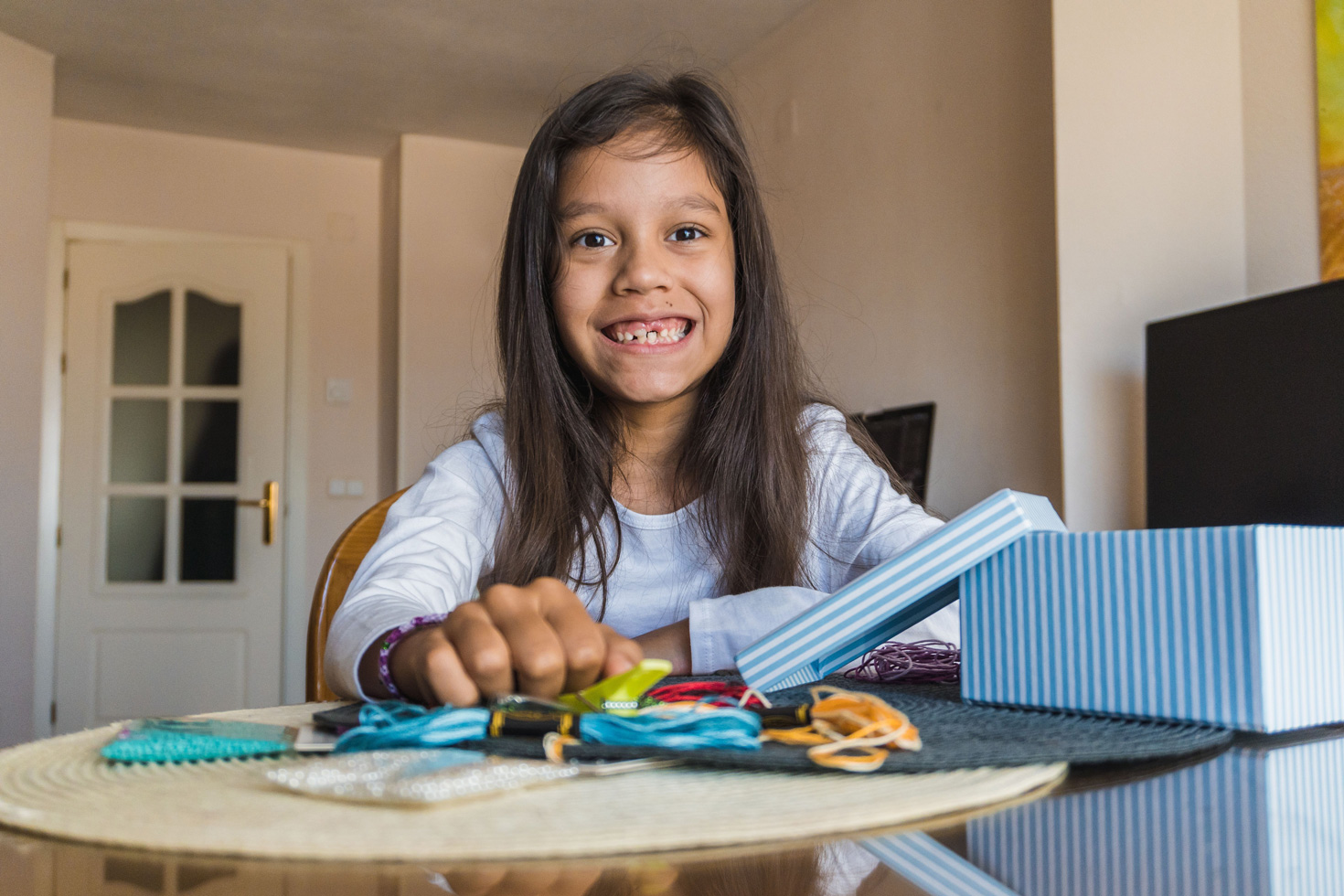 My Cart0
My Cart0

What Are Signs of Mild Autism? A Guide for Parents
Mild autism refers to individuals on the autism spectrum who may require less support but still experience distinct challenges, particularly in social communication, sensory processing, or adapting to change. While many can function independently and achieve success in various areas of life, this does not mean they are free from the difficulties associated with autism.
Recognising the signs of mild autism early is essential, as it allows for timely interventions, helping the child build self-awareness and strategies to manage potential challenges as they grow. With the right guidance, children with mild autism can learn to navigate their world with confidence and resilience.
Exploring Mild Autism
Mild autism, also known as Level 1 Autism Spectrum Disorder (ASD) under the DSM-5 classification, refers to individuals who require minimal to moderate support in social and behavioural settings. They are often referred to as individuals with high-functioning autism, as they appear to function well in certain environments. However, they still encounter challenges that can impact their social, academic, or emotional development.
It’s important to note that the term “mild” describes the level of support required, not the extent of a person’s struggles. For example, a child with mild autism may manage well in structured settings but still face considerable difficulty in unstructured social situations or when coping with sensory stimuli.
What Are the Signs of Mild Autism?
Children with mild autism may require only minimal to moderate support, but they still exhibit certain behaviours that are characteristic of autism. The key traits often include:
- Challenges in Social Communication and Interaction: Difficulties in making eye contact, understanding social cues, or engaging in two-way conversations.
- Repetitive Behaviours and Restricted Interests: Repetitive movements, strong attachment to routines, or intense focus on specific topics.
- Sensory Sensitivities: Heightened or reduced sensitivity to sounds, textures, lights, or other sensory input.
Recognising Subtle Indicators
Mild autism can often go unnoticed, especially when a child appears to function well in everyday situations. However, behind seemingly typical behaviours may lie subtle differences that set them apart from their peers. These indicators can easily be mistaken for personality traits such as shyness, introversion, or stubbornness, making early detection more challenging.
Understanding these nuances is key to ensuring timely support and intervention.
Social Communication Differences
Children with mild autism often face subtle social communication challenges that may not be immediately obvious. These include:
- Nonverbal Communication: They may avoid eye contact, use limited facial expressions, or have difficulty interpreting body language. Gestures may appear awkward or out of sync with what they’re saying.
- Conversational Challenges: They may struggle with the natural flow of conversation, finding it difficult to take turns speaking, misinterpreting sarcasm, or failing to pick up on social cues such as tone of voice or facial expressions.
Repetitive Patterns and Focused Interests
These behavioural patterns are common in children with mild autism, though they may manifest in less obvious ways than in moderate or severe cases. Some signs and symptoms include:
- Repetitive Movements: These may include subtle pacing, finger-flicking, hand-flapping, or repeating words and phrases (echolalia).
- Adherence to Routines: Children may become noticeably upset when there are unexpected changes to their daily routine, even if the changes are minor.
- Intense Focus on Interests: Unlike typical hobbies, these interests may be unusually intense or all-consuming. A child might talk at length about a specific topic, like train schedules, animal facts, or numbers, and show little interest in discussing anything else.
Sensory Processing Variations
Children with mild autism often process sensory information differently, which can impact their reactions to their environment.
- Hypersensitivity: They may become overwhelmed by bright lights, loud noises, crowded places, or certain textures. Reactions can include covering ears, avoiding eye contact, or refusing to wear specific clothing.
- Hyposensitivity: In contrast, some children may appear indifferent to pain, cold, or loud sounds. They may actively seek sensory stimulation through behaviours like spinning, jumping, or pressing against objects.
How Does a Child with Mild Autism Behave?
Identifying whether the child has mild autism can be complex, especially when symptoms are subtle or masked by learned behaviours. However, when signs have been identified in the child, assessments will be conducted in collaboration with a team of professionals and their caregivers.
Understanding the Diagnostic Standards
Autism is diagnosed using the criteria outlined in the DSM-5. These diagnostic standards help clinicians identify and classify autism based on observable behaviours, symptoms, and developmental history. For individuals with mild autism, the following core diagnostic criteria must be present:
- Social Communication Deficits: Difficulties in social reciprocity, nonverbal communication (e.g., eye contact, facial expressions), and forming or maintaining relationships across various contexts.
- Repetitive Behaviours and Restricted Interests: Repetitive movements, strict adherence to routines, or highly focused interests.
- Early Developmental Onset: Symptoms must be present in early childhood, though they may not become fully evident until social demands increase or coping strategies can no longer compensate.
These criteria ensure a consistent framework for evaluating individuals, regardless of the level of support they may require.
The Assessment Procedure
Diagnosing mild autism typically involves a comprehensive, multidisciplinary assessment. Because symptoms can be subtle, especially in high-functioning individuals, input from various professionals is crucial to making an accurate diagnosis.
The assessment process generally includes:
- Caregiver Interview: A trained clinician gathers developmental, behavioural, and social information from parents or caregivers.
- Direct Observation: The individual is observed in different settings to identify signs of autistic behaviour and interaction styles.
- Standardised Assessments: Tools such as the Autism Diagnostic Observation Schedule (ADOS) and the Autism Diagnostic Interview-Revised (ADI-R) are used for structured, evidence-based evaluation.
- Developmental History Review: This includes reviewing school records, medical history, and previous assessments to create a comprehensive picture of the individual’s development.
- Multidisciplinary Collaboration: Input from psychologists, speech-language therapists, occupational therapists, and developmental paediatricians ensures a well-rounded diagnosis and support plan.
Support and Intervention Strategies
For children with mild autism, early and consistent intervention can help support their social, emotional, and academic development. A tailored combination of therapies and programmes helps address specific challenges while enhancing strengths.
- Speech Therapy: This typically focuses on improving language development, articulation, and pragmatic communication skills such as turn-taking and understanding social cues.
- Occupational Therapy: During occupational therapy sessions, children with autism learn how to develop independence in daily living tasks and regulate their responses to sensory input, such as sound, touch, or movement.
- Social Skills Training: Children with mild autism practice peer interactions in a structured environment, where they learn to develop empathy, emotional regulation, and an understanding of unspoken social rules.
Individualised Education Plans (IEPs)
In mainstream school settings, students with mild autism often thrive with an Individualised Education Plan (IEP) designed to support their unique learning needs. IEPs are created in collaboration with parents, educators, and allied health professionals and are regularly reviewed to adjust to the child’s evolving needs.
Key components include:
- Personalised Goals: Clearly defined academic, social, behavioural, or communication objectives.
- Classroom Accommodations: Modifications such as extended time on tests, visual schedules, sensory breaks, or seating arrangements to reduce distractions.
- Support Services: Access to learning support educators, speech and language therapists, shadow teachers, or school counsellors to ensure a supportive learning environment.
Navigating Life with Mild Autism
Children with mild autism can lead fulfilling lives with the right support systems in place. Beyond therapy and academics, fostering meaningful connections and promoting well-being is essential to their long-term development.
Fostering Social Connections
Positive social interactions help build confidence and a sense of belonging. Parents and educators can encourage social growth by:
- Encouraging Interest-Based Activities: Enrolling children in clubs or enrichment classes related to their passions (e.g., robotics, chess, art, music) provides natural opportunities for connection with like-minded peers.
- Facilitating Playdates or Peer Mentorship: Regular, structured social opportunities help children practice skills in real-world settings.
Promoting Self-Care and Emotional Well-being
Self-care includes both physical independence and emotional regulation. Supporting this aspect of development helps children build resilience.
- Managing Sensory Sensitivities: Strategies such as noise-cancelling headphones, weighted blankets, sensory bins, or calm-down corners can help prevent sensory overload and improve focus.
- Encouraging Self-Care Activities: Activities such as exercise, yoga, journaling, drawing, or deep breathing help children cope with stress and express their emotions in a constructive manner.
- Teaching Emotional Literacy: Helping children identify, label, and express feelings can reduce meltdowns and improve communication.
Can Someone with Mild Autism Lead a Normal Life?
Absolutely. Many individuals with mild autism lead independent and fulfilling lives, especially when they receive early intervention and the right support. With inclusive education and understanding from family, teachers, and peers, children with mild autism can thrive in school, develop strong communication skills, and engage meaningfully in social activities. As they grow, many continue to build on these skills and gain confidence in navigating everyday challenges.
Get Early Intervention and Support for Mild Autism
Early intervention plays a crucial role in helping children with mild autism reach their full potential. Addressing challenges in communication, social interaction, and sensory regulation during the early years can lay the foundation for long-term success in education, relationships, and daily living. The autism therapy and support begins, the more opportunities there are to strengthen essential life skills and build confidence.
At Exploring Mates, we understand the importance of tailored support. Through our early intervention programme in Singapore, our professionals work closely with parents and caregivers to identify each child’s unique needs and strengths. We provide guidance, structured interventions, and practical tools to help your child thrive, whether that means integrating into a mainstream school, developing self-regulation strategies, or building social connections. Together, we help children with mild autism grow into capable, confident individuals ready to take on the world.
For more helpful guides on how to support children with autism, check out our guide on the signs of autistic burnout and the importance of vocational training for autism.







